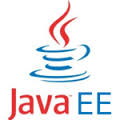When you are working with the JNDI look up, quite often you would encounter the javax.naming.NameNotFoundException thrown by your application. JNDI names are registered in the registery, if you try to access the name which is not registered or by the wrong format, you would get the javax.naming.NameNotFoundException. Lets look at the below code for …
JNDI
Dependency Management with JNDI
In this article we will see an introduction to dependency management through JNDI (Java Naming and Directory Interface). We will see how to name resources with annotations and how to search dependencies are created. Furthermore, we see examples of using JNDI API and alternatives to search certain components. The business logic of an application is …
Accessing objects in JNDI using Spring
1) Introduction Spring provides support to access objects from the JNDI Repository. This article will begin with the JNDI concepts along with a sample JNDI Application. Then it will proceed with the various core supporting classes available in Spring for JNDI Integration. Following that, practical samples would be given to make things clear. The pre-requisite …



